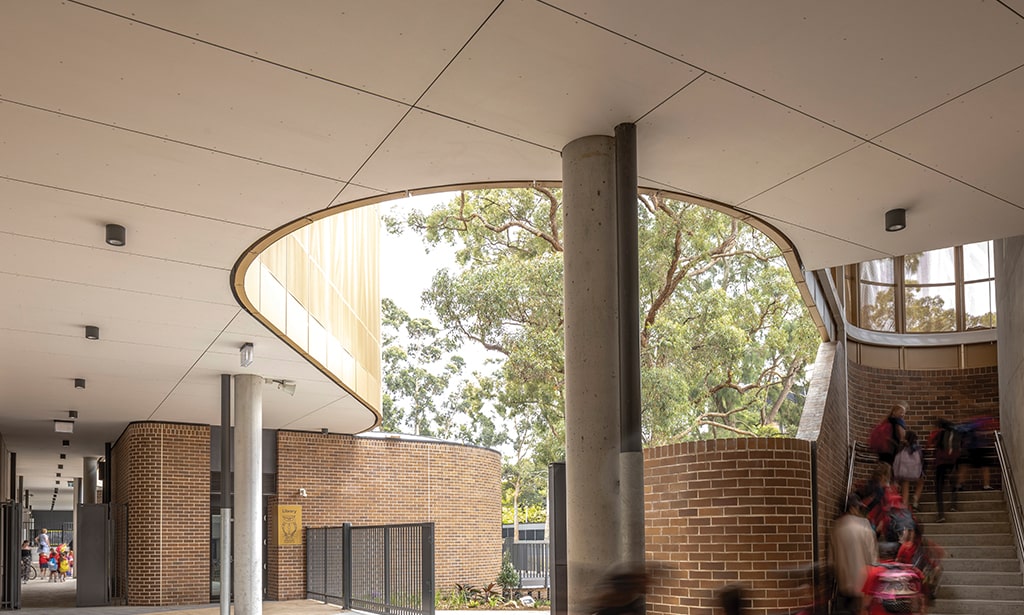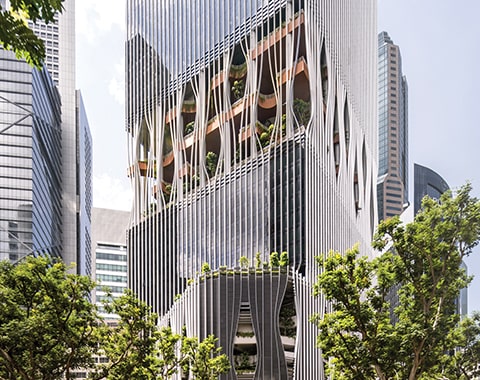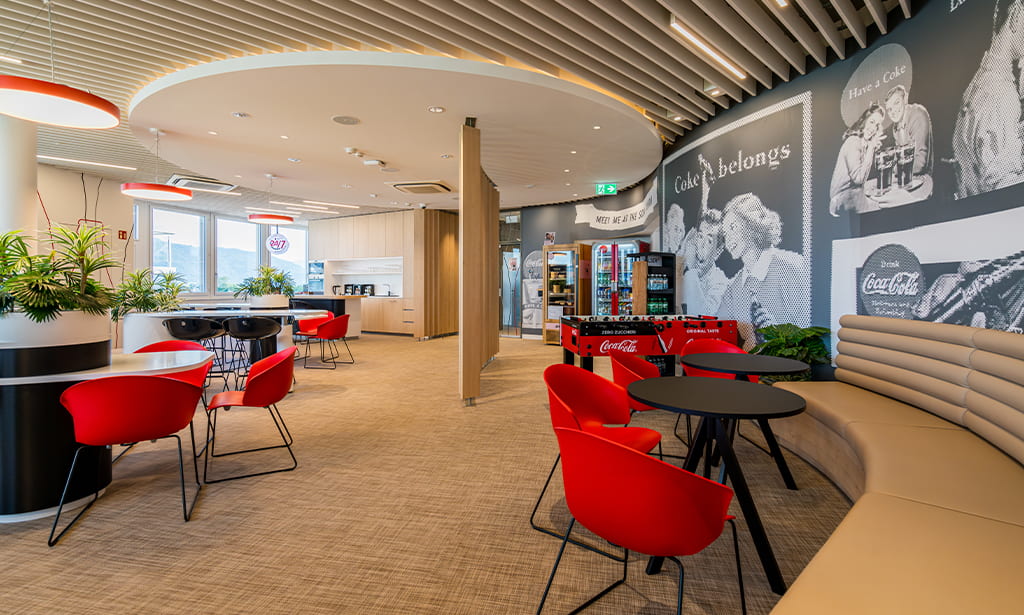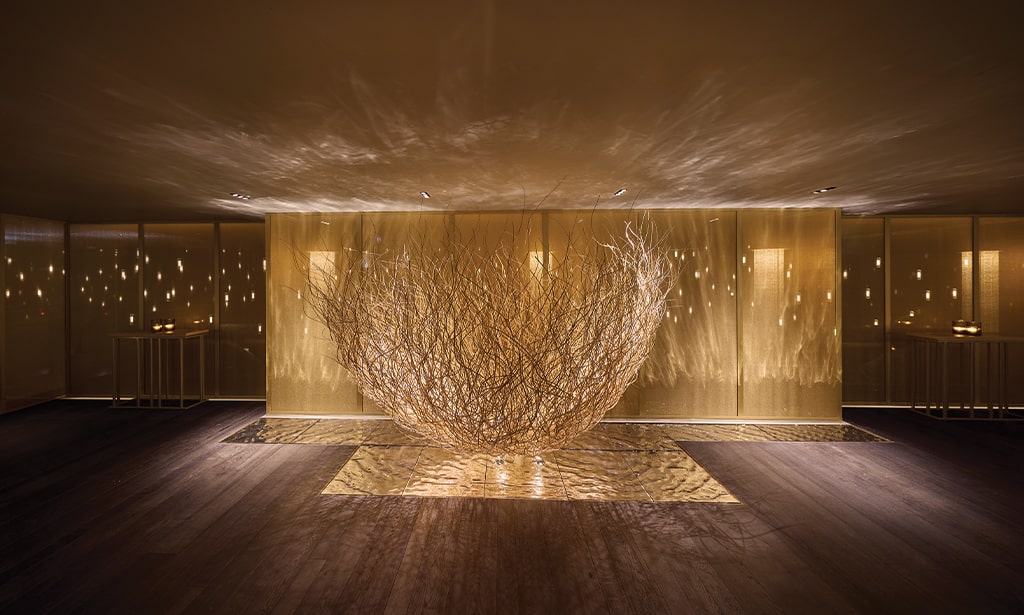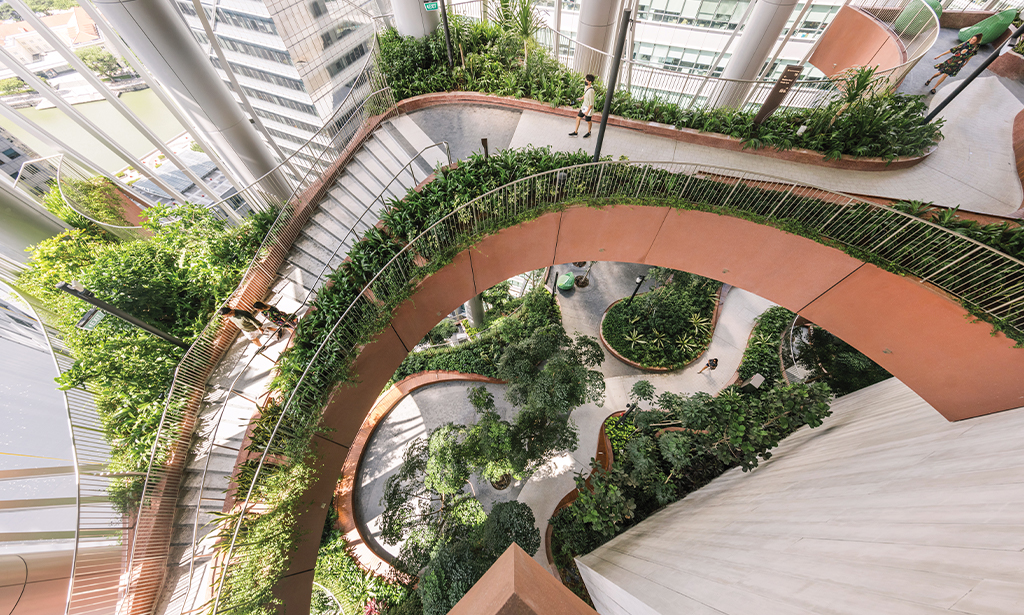
BIOPHILIC DESIGN SEEKS TO BRING THE ESSENCE OF NATURE INTO INDOOR ENVIRONMENTS
Biophilic design harnesses our natural connection to the outdoors to improve the spaces where we live and work. By integrating elements like natural light, views of nature, organic materials, textures, patterns, and ventilation, it creates environments that feel restorative and calming. At its core, biophilia reflects our innate desire to connect with other forms of life and the natural world.
Today, the construction industry is increasingly focused on understanding how biophilic design affects human health, well-being, and cognitive performance. This approach is especially important as we strive to create sustainable and comfortable buildings that foster a deeper bond with nature. With people spending more time indoors than ever before, the quality of indoor environments has become a key factor in determining overall well-being. Designing spaces that prioritise comfort, efficiency, and health is now more critical than ever.
The guiding principle of biophilic design is quite simple: connect people with nature to improve their well-being and quality of life. How could architecture do that? By seeking alternatives to integrate nature, either through natural elements or techniques, into its designs.
Designing Spaces That Connect Us to Nature
There are countless benefits of being in touch with nature and the spaces that we live in can either cut us off from it or allow us to connect to it. Biophilic architecture integrates ideas of buildings that are connected to their surrounding nature and interact with the senses of their denizens, using natural elements, such as water features, natural light and plants, as well as natural materials like wood, glass and stone. It aligns with the ever-important ideals of sustainable and green building practices, while also benefiting the physical and mental health of the end user.
The concept of “biophilia,” which means “love of life,” has roots in ancient Greece. While it might seem like a modern trend in architecture and interior design, the idea has been around for decades. Psychologist Erich Fromm introduced the term in 1964, and biologist Edward O. Wilson popularised it in the 1980s when he explored how urban life weakens our connection to nature.
Biophilic design isn’t just about aesthetics, it’s about improving our mental and physical well-being. This is especially important today, as most of us spend about 90% of our time indoors. The simplest way to achieve this is by bringing natural elements like sunlight, greenery, water, and wood into our spaces. Many biophilic designs also move away from rigid, straight lines, instead embracing soft, organic shapes inspired by the natural world. But it’s not just about what we see, it’s about how we can mimic nature’s systems and processes to create spaces that feel alive and restorative. At its core, biophilic design is about reconnecting people with nature to enhance their lives.
Bringing Nature Back into Our Homes and Workplaces
Biophilic design seeks to bring the essence of nature into indoor environments, helping individuals reconnect with nature even when inside.
More and more, we’re realising how much our surroundings affect our well-being. As this awareness grows, architects and designers are collaborating with researchers and human behaviour experts to create spaces that truly support how we live, work, and feel. This shift has sparked greater interest in fields like biophilia and neuroarchitecture, pushing us to think more deeply about the choices we make when shaping the spaces we share.
Interior designers are at the forefront of this movement, taking a human-centred approach to address the challenges of modern living. By prioritising health, safety, and emotional well-being, today’s designers are finding new and creative ways to make our interiors both functional and nurturing. Biophilia is becoming a guiding principle for this work, offering a fresh, holistic perspective on what great design can be.
As more people prioritise creating healthy, beautiful environments, there’s growing demand for spaces that feel connected to nature. Incorporating natural materials whether it’s wood in a living room, greenery in an office, or stone in a lobby does more than just look good. It helps us feel good, too. These choices remind us of our connection to the natural world, changing the way we experience the places where we live and work.
Why Biophilic Design Matters
Biophilic design doesn’t just make spaces more enjoyable, it has real, measurable benefits for our lives. Studies show that incorporating nature into our surroundings can reduce stress, boost creativity, and even speed up recovery from illness. In offices, biophilic design can improve employee well-being and productivity, helping people feel happier and more engaged at work.
While adding plants is one obvious way to embrace biophilic design, it’s only the beginning. Our brains respond to natural patterns, shapes, and textures, things like the fractals and flowing lines we see in leaves or rivers. Even when we know these patterns aren’t alive, they remind us of life and growth, sparking a sense of comfort and familiarity. This idea, called biomimicry, uses the principles of nature to guide design. It’s a powerful way to make our spaces not just functional, but deeply meaningful and restorative.
By embracing biophilic design, we’re creating environments that nurture us in ways we may not even realise: spaces that don’t just house us, but help us thrive.
